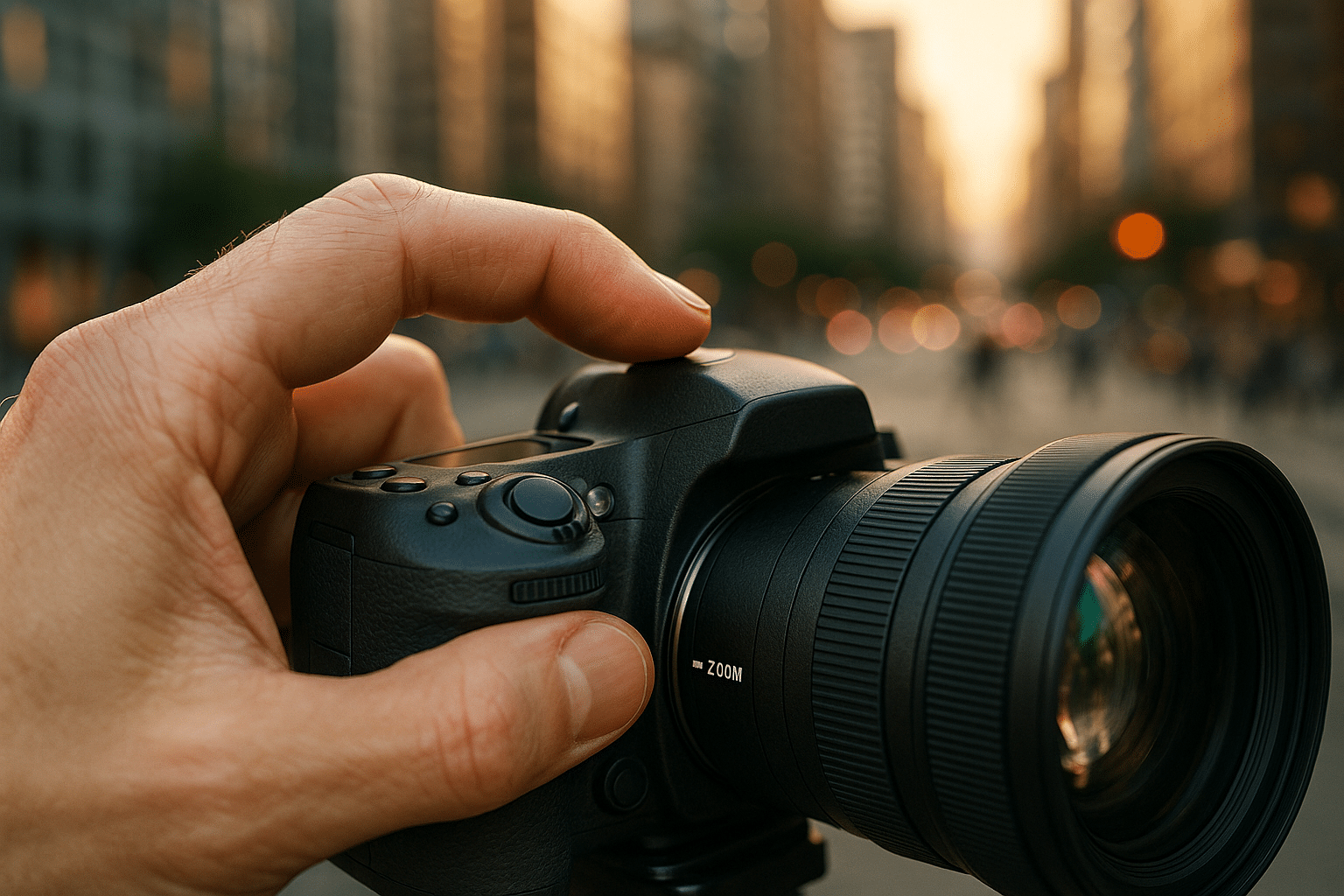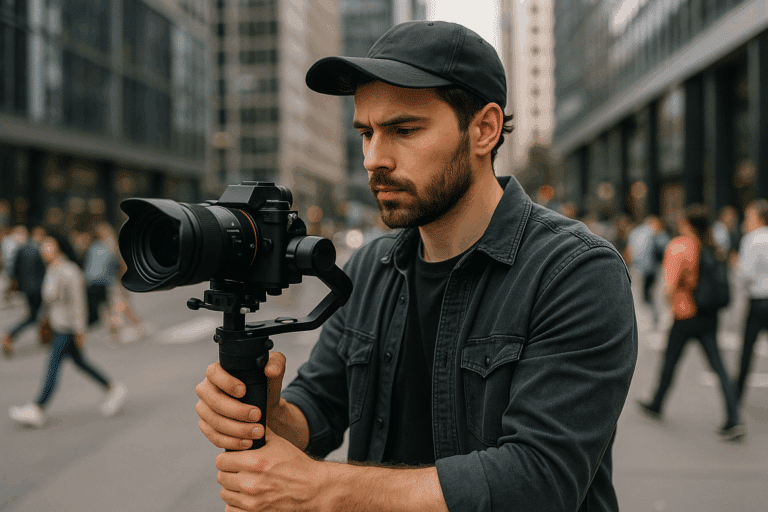In the world of digital photography and videography, the ability to capture stunning, cinematic shots has long been the province of professionals equipped with high-end gear. However, as technology evolves, so do the possibilities for the average user. The power to master cinematic shots is now literally at your fingertips. 🎬
Today, we delve into the wonder of creating incredible video content using a tool you probably already have in your pocket – your smartphone. But this isn’t about randomly pointing your camera and hitting record. It’s about harnessing the full potential of your device and understanding the essential principles of cinematography to elevate your footage from mundane to mesmerizing. 📲
Our focal point? The Zoom function. It’s not just a mere feature on your smartphone camera; it’s a versatile storytelling tool that can add depth, drama, and dynamism to your shots. Whether you’re an amateur video enthusiast or a budding filmmaker, get ready to ‘Zoom into Action’ and master cinematic shots with just one finger. 📽️
What Lies Ahead?
As we venture into the depth of this topic, we’ll first navigate the waters of understanding the basic theory behind cinematic shots. We’ll take a look at the different types of shots in cinematography and how they contribute to telling a compelling story. 📚
We’ll then dive into the practical aspect of creating these shots using your smartphone. You’ll be introduced to the magical world of Zoom and how to employ it effectively to add a cinematic touch to your videos. We’ll dissect the nuances of Zoom, shedding light on the difference between optical and digital zoom, and which one is the right choice for cinematic shots. 🔍
Additionally, we’ll explore the importance of stabilization, framing, and lighting when it comes to capturing that perfect shot. We’ll even touch on the post-production process, discussing how to refine your footage with the aid of editing software.
By the end of this read, you’ll be well-equipped with the knowledge and techniques needed to transform your smartphone into a powerful cinematic tool. 🎥
Who Should Read This?
Are you a content creator looking to produce high-quality videos for your social media channels? Perhaps you’re an aspiring filmmaker yearning to master the art of cinematography without investing in costly equipment. Or, you might be a seasoned photographer looking to expand your skill set into the realm of videography. Regardless of your background, if you have a passion for creating compelling video content and a smartphone in your possession, this blog post is designed for you. 🎯
So, are you ready to ‘Zoom into Action’? Let’s plunge into the captivating world of smartphone cinematography and transform the way you capture video content, one shot at a time. 🚀
Unveiling the Magic: Master Cinematic Shots with Your Fingertips
In this digital age, creating high-quality, cinematic shots is no longer reserved for professionals with high-end equipment. Now, anyone with a smartphone can create stunning visuals. But, to truly master cinematic shots, you need more than just the right tool. You need the right technique and understanding. That’s what this article is about – mastering cinematic shots with just one finger.
In this comprehensive guide, we will delve into the art of mobile cinematography. We will examine how to capture dramatic, professional-grade footage with a simple swipe or tap on your screen. But before we dive into this, let’s first understand what cinematic shots are and why they are so important.
Cinematic shots are visual representations that tell a story. They are composed with a deep understanding of framing, lighting, perspective, and movement. When done right, cinematic shots evoke emotions and engage viewers in a way that ordinary shots can’t. They are a powerful tool for storytelling and can transform a mundane scene into a captivating visual experience. Therefore, mastering cinematic shots is a crucial skill for any aspiring filmmaker or content creator.
The Basics of Cinematic Shots: The Key Ingredients
The first step towards mastering cinematic shots is understanding the basic elements that make a shot ‘cinematic’. These elements include composition, movement, lighting, and depth of field. Let’s take a closer look at each of these elements:
Composition
Composition is the arrangement of elements within a frame. It’s about how you position your subject, what you include in the frame, and what you leave out. Good composition draws the viewer’s attention to the main subject and creates a visual balance in the image.
Movement
Movement refers to the motion of the camera, the subject, or both. It can add dynamism to your shots and guide the viewer’s eye through the frame. Different types of camera movements can create different effects and convey different emotions.
Lighting
Lighting is a key component of any cinematic shot. It can set the mood, highlight the subject, and add depth and dimension to the frame. Understanding and controlling light is a critical skill in cinematography.
Depth of Field
Depth of field is the area in the frame that appears sharp. It can be used to draw focus to a particular part of the image and create a sense of depth and three-dimensionality.
Mastering the Art of Cinematic Shots with Your Smartphone
Now that we’ve covered the basics, let’s delve into how you can apply these principles to create cinematic shots using just your smartphone and your finger. With the advent of advanced smartphone cameras, anyone can produce professional-grade visuals. However, it requires a thorough understanding of the capabilities and limitations of your device, as well as some technical know-how.
Understanding Your Smartphone Camera
Your smartphone camera is a powerful tool, but to harness its full potential, you need to understand its features and how to use them. Most smartphone cameras come with a range of settings and modes that allow you to control aspects like focus, exposure, white balance, and more. Take the time to explore these features and understand how they can help you achieve the desired effect.
Applying the Principles of Cinematic Shots
Once you understand your camera, you can start applying the principles of cinematic shots. Use composition rules like the rule of thirds, leading lines, and symmetry to arrange elements in your frame. Experiment with different camera movements like pans, tilts, and tracking shots to add dynamism to your footage. Play with lighting to create different moods and use depth of field to draw focus to your subject.
To help you visualize these principles, check out this informative YouTube video: “Cinematic Shots with Your Smartphone” by Filmora Video Editor. It offers valuable tips and examples of how to create cinematic shots with your smartphone.
A Step-by-Step Guide to Creating Cinematic Shots
Now, let’s break down the process of creating a cinematic shot with your smartphone into simple, actionable steps:
Step 1: Plan Your Shot
Every great cinematic shot starts with a plan. Before you start shooting, decide what you want your shot to convey and how you want to compose it. Think about your subject, your background, your lighting, and your camera movement.
Step 2: Set Up Your Camera
Next, set up your camera. Adjust your settings to match your vision for the shot. If you want a shallow depth of field, for example, set your aperture to the lowest possible value. If you’re shooting in low light, increase your ISO. Remember to keep your movements smooth and steady.
Step 3: Shoot and Review
Now, it’s time to shoot. Keep your finger ready to tap or swipe on your screen as needed. Once you’ve captured your footage, review it to make sure it matches your vision. If it doesn’t, don’t be afraid to reshoot until you get it right.
By following these steps and applying the principles of cinematic shots, you can create stunning visuals with just your smartphone and your finger. So, why wait? Grab your phone and start experimenting today!

Conclusion
In conclusion, the road to mastering complex concepts in the fields of IT and engineering is a challenging, yet rewarding journey. This in-depth analysis has delved into a plethora of important areas, unraveling technicalities and providing an insightful glance into intricate topics that form the backbone of our digital era.
Firstly, we embarked on the exploration of software engineering principles, emphasizing their importance in the creation of reliable, efficient, and maintainable software. We underscored how they serve as a solid foundation and a guiding compass for developers, ensuring that they stay on the right path.
Secondly, we dove into the fascinating world of information technology, shedding light on its crucial role in our society. Not only does IT accelerate the pace of progress in various sectors, but it also holds the potential to revolutionize our lives in ways we can’t even imagine.
The third key point we dissected was the significance of technical writing. It is the bridge that connects complex technological concepts with a broader audience. Through clear, concise, and comprehensible language, technical writing brings us closer to understanding and exploiting the full potential of technological advancements.
In conclusion, understanding these domains is vital in this rapidly evolving technological landscape. Their integration and symbiosis have made strides in our society, and their importance cannot be overstated.
To continue your exploration and deepen your knowledge in these fields, you can refer to active and reliable sources such as the Association for Computing Machinery (ACM) and International Society for Technology in Education (ISTE). These platforms offer a wealth of resources and research materials that can assist you on your learning journey.
I encourage you to share your thoughts and experiences on these topics. Feel free to comment below with any insights, queries, or reflections you may have. This discussion can lead to further learning and progress for us all. Also, don’t hesitate to share this article with others who might find it beneficial. Let’s spread the knowledge! 💡🌐💻
Moreover, if you find this content valuable and applicable, why not put it into practice? Whether you’re a developer, an IT professional, or a tech enthusiast, there’s always room for growth and improvement. Use this knowledge to enhance your work, innovate, and contribute to this ever-growing field.
On a final note, remember that the pursuit of knowledge is a lifelong journey. As Albert Einstein once said, “Once you stop learning, you start dying.” So, let’s keep learning, growing, and contributing to the technological advancement of our world. 🚀🌍🌟
Reference:
ACM,
ISTE
Remember, stay curious, stay informed, and never stop learning. Until next time, this is Rodrigo Almeida, signing off.


